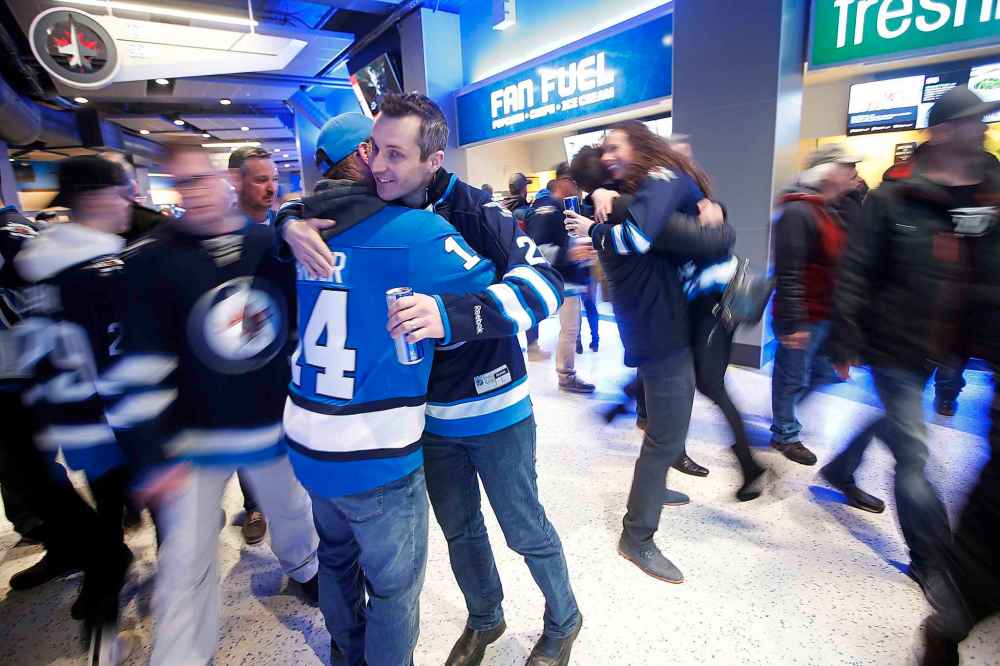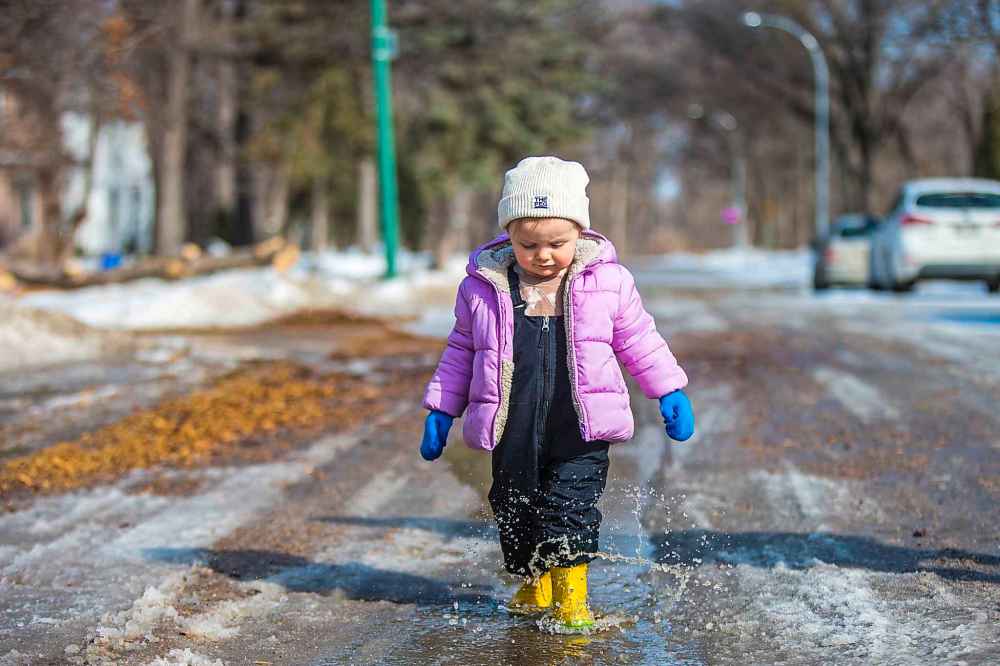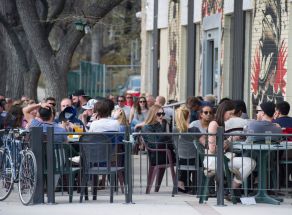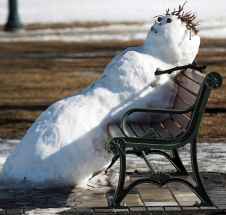A year later, it’s nearly spring again Lives have been altered in too many ways to count and the pandemic is still a long way from over, but winter's end brings a measure of hope
Read this article for free:
or
Already have an account? Log in here »
To continue reading, please subscribe:
Monthly Digital Subscription
$0 for the first 4 weeks*
- Enjoy unlimited reading on winnipegfreepress.com
- Read the E-Edition, our digital replica newspaper
- Access News Break, our award-winning app
- Play interactive puzzles
*No charge for 4 weeks then price increases to the regular rate of $19.00 plus GST every four weeks. Offer available to new and qualified returning subscribers only. Cancel any time.
Monthly Digital Subscription
$4.75/week*
- Enjoy unlimited reading on winnipegfreepress.com
- Read the E-Edition, our digital replica newspaper
- Access News Break, our award-winning app
- Play interactive puzzles
*Billed as $19 plus GST every four weeks. Cancel any time.
To continue reading, please subscribe:
Add Free Press access to your Brandon Sun subscription for only an additional
$1 for the first 4 weeks*
*Your next subscription payment will increase by $1.00 and you will be charged $16.99 plus GST for four weeks. After four weeks, your payment will increase to $23.99 plus GST every four weeks.
Read unlimited articles for free today:
or
Already have an account? Log in here »
Hey there, time traveller!
This article was published 05/03/2021 (1739 days ago), so information in it may no longer be current.
Was it like this, in the beginning? The same stirring in the air, the same gently blown kiss of an incoming spring? It must have been, because one of the last normal things I did was go out for drinks with a friend and, at the moment we hugged in parting, I dropped my coat on the sidewalk and savoured the night breeze on my skin.
He picked up the coat and handed it back. I slung it over my shoulder. When he left, I walked home with bare arms and sat on the stone steps of an old church, thumbing through my phone, full of hope for the year ahead.
So yes, it must have been like this, the same hopeful weather. But it’s hard to remember what it felt like back then.
Days after that night, everything began changing. Slowly, at first, because it was early March 2020 and we still had the luxury of not paying too much attention. The headlines were escalating, but in Manitoba; they still had the air of something that was happening somewhere else, just like so much of the news we get from the world.
China was under lockdown; we went out for dinners. On March 3, 15,000 of us packed Bell MTS Place to watch the Jets beat the Buffalo Sabres; three days later, Italian doctors published a guide on how to ration care as hospitals in Lombardy drowned under a rising sea of dying patients. The doctors there were dying, too.
On March 11, the NBA abruptly shut down its season. Was that when everything started to feel uncertain?

The next day, Manitoba announced its first case of COVID-19; within a week, the Canadian border was shuttered, restrictions limited gatherings and businesses, and toilet paper began to vanish from store shelves.
So it’s hard to pick one day to mark as the anniversary of COVID-19 in Manitoba, because the awareness of what was unfolding happened a little differently for all.
For each one of us, there will be one memory that carves the line between before and after: the last normal day, the first major change, the ground shifting under the feet.
For each one of us, there will be one memory that carves the line between before and after: the last normal day, the first major change, the ground shifting under the feet.
Let’s just say the next two weeks will mark a year since the pandemic came here, give or take.
It’s a year that can be counted in the loss of more than 900 Manitoba lives. In untold nights people spent alone, or struggling to get by. A year that can be counted in groaning ICUs pushed far past their pre-pandemic limit, and in the tears of nurses and health-care aides who had to bear much of that weight.

There is no question we are coming out of the last year changed. Some of it will take years to understand: there are young children now who are old enough to speak, but not to clearly remember a time before COVID-19. How will the pandemic carve itself into their forming awareness of the world? We may not fully know until they are grown.
And it is still not quite time to do a full accounting of the things that went right, in response to the pandemic, and all that went wrong. The calm of Manitoba’s relatively unfettered summer is far behind us, but the chaos of a whiplash fall and winter code red is not; we will need a wide view on what happened, to prepare for the next.
With that in mind, these are some of the biggest questions of the first year, to address in the second.
How was it that Manitoba’s health-care system frayed so quickly when the second wave hit? How could it be made more resilient going forward? Why did some personal-care homes become so overwhelmed, despite having months to prepare? What can be done to make senior care stronger, safer and better equipped?
Did we move too slowly to react to the rising cases of the fall? How many lives could have been saved if things had been different? Would there have been a more moderate approach then that could have saved the strain of winter’s hard lockdowns? Knowing what we know now, would the public demand a different course of action?
The first 12 months of the pandemic pushed us to come face to face with everything we always took for granted, from how we work, to how we live our lives, to our points of connection.
It’s no surprise that the virus did not wreak its havoc equally. The second wave, in particular, affected Indigenous folk at a largely disproportionate rate. That’s a crisis centuries in the making, built on injustices that have been allowed to persist with little material change. Will anything happen now to support those communities better?
These are just some of the questions the whole community must ask, as we look ahead. Other questions are more personal. Above all, the first 12 months of the pandemic pushed us to come face to face with everything we always took for granted, from how we work, to how we live our lives, to our points of connection.
In the longest nights of a lonely winter, with nowhere to go and nobody to see or touch or break the quiet sameness of a locked-down existence, something precious was lost, for many people. It will be found again, as we emerge into this year of vaccinations and loosening restrictions, but the scars will persist where it had been.

On one balmy morning this week, a friend called to celebrate some good news I’d received. We started talking about everything that had happened since the last time we’d chatted. The pandemic had been good to him, he said. Things in his life had changed for the better. He felt guilty for saying that, he added: so many have lost so much.
We spoke for a long time, my friend and I. It was, I realized, the first time I’d heard his voice since we’d met up that night one year ago, when I dropped my coat and walked home with arms bared to the breeze. It was one of the last normal things I did before everything changed; one of the last nights on the town that truly felt free.
Since then, we’ve all been tested, in big ways and small. Some of us lost everything to the virus, or the lockdowns to hold it at bay. Others managed to get by, and some of us found ways to thrive, but what matters is that in the end we got there together. It’s been a year, and this thing isn’t over, but let’s take a moment to reflect, and remember.
The last 12 months broke too many hearts. But we’ve made it this far, and now the air tastes like spring.
melissa.martin@freepress.mb.ca
Our newsroom depends on a growing audience of readers to power our journalism. If you are not a paid reader, please consider becoming a subscriber.
Our newsroom depends on its audience of readers to power our journalism. Thank you for your support.











